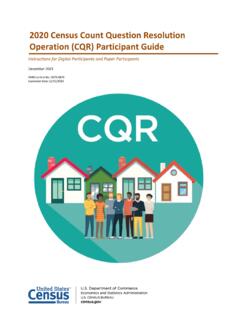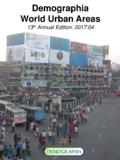Transcription of The housing conditions of Aboriginal people in Canada
1 Catalogue no. 98-200-X2016021 ISBN 978-0-660-20363-8 census of population , 2016 The housing conditions of Aboriginal people in CanadaRelease date: October 25, 2017 census in BriefStandard table symbolsThe following symbols are used in Statistics Canada publications:. not available for any reference period .. not available for a specific reference period .. not applicable 0 true zero or a value rounded to zero 0s value rounded to 0 (zero) where there is a meaningful distinction between true zero and the value that was rounded p preliminary r revised x suppressed to meet the confidentiality requirements of the Statistics Act E use with caution F too unreliable to be published * significantly different from reference category (p < )How to obtain more informationFor information about this product or the wide range of services and data available from Statistics Canada , visit our website, You can also contact us by email at telephone, from Monday to Friday, 8.
2 30 to 4:30 , at the following numbers: Statistical Information Service 1-800-263-1136 National telecommunications device for the hearing impaired 1-800-363-7629 Fax line 1-514-283-9350 Depository Services Program Inquiries line 1-800-635-7943 Fax line 1-800-565-7757 Note of appreciationCanada owes the success of its statistical system to a long-standing partnership between Statistics Canada , the citizens of Canada , its businesses, governments and other institutions. Accurate and timely statistical information could not be produced without their continued co-operation and of service to the publicStatistics Canada is committed to serving its clients in a prompt, reliable and courteous manner.
3 To this end, Statistics Canada has developed standards of service that its employees observe. To obtain a copy of these service standards, please contact Statistics Canada toll-free at 1-800-263-1136. The service standards are also published on under Contact us > Standards of service to the public. Published by authority of the Minister responsible for Statistics Canada Minister of Industry, 2017 All rights reserved. Use of this publication is governed by the Statistics Canada Open Licence HTML version is also publication est aussi disponible en fran Canada Catalogue no. 98-200-X2016021 1 The housing conditions of Aboriginal people in CanadaHighlights One in five ( ) Aboriginal people ( ) lived in a dwelling that was in need of major repairs in 2016.
4 The proportion living in a dwelling that needed major repairs decreased for each of the three Aboriginal groups (First Nations people , M tis and Inuit) from 2011 to 2016. The lone exception was on reserve, where the proportion of First Nations people with registered or treaty Indian status living in a dwelling that needed major repairs went up by percentage points. In 2016, of Aboriginal people lived in housing that was housing is an issue of particular significance for the Aboriginal population in Canada . Many Aboriginal communities are located in northern and remote communities, where winter conditions are harsher and building supplies are more difficult to access and more expensive.
5 Furthermore, the growth of the Aboriginal population as highlighted in the infographic The Aboriginal population in Canada ( ) has outpaced the rest of Canada . As a result, the housing conditions of Aboriginal peoples affect an increasingly large share of the article uses new data from the 2016 census of population to analyze the housing conditions of the Aboriginal population in in five Aboriginal people live in a dwelling that is in need of major repairsOf the 1,673,785 people who reported an Aboriginal identity ( ) on the 2016 census of population , 324,900 lived in a dwelling that was in need of major repairs ( ).This group accounted for one-fifth ( ) of the total Aboriginal population in Canada .
6 In comparison, of the non- Aboriginal population reported living in a dwelling in need of major ( ) of Inuit, of First Nations people and of M tis lived in a dwelling that was in need of major repairs in 2016. These proportions are down from 2011 by percentage points for Inuit, percentage points for First Nations people and percentage points for M tis. Table 1 shows the percentage of First Nations people with and without registered or treaty Indian status, M tis and Inuit by condition of dwelling in 1 Condition of dwelling for First Nations people with and without Registered or Treaty Indian status, M tis and Inuit, Canada , 2016 Aboriginal identityTotal Condition of dwellingRegular maintenance onlyMinor repairs neededMajor repairs neededpercentFirst Registered or Treaty Indian Registered or Treaty Indian : Statistics Canada , census of population , Statistics Canada Catalogue no.
7 98-200-X2016021 The housing conditions of Aboriginal people in CanadaThe proportion of Inuit living in a dwelling that needs major repairs is highest in NunavutThe majority ( ) of the Inuit population lived in Inuit Nunangat ( ) in 2016. The proportion who lived in Inuit Nunangat were significantly more likely to live in a dwelling that was in need of major repairs than those who lived outside Inuit Nunangat ( versus ).The proportion of Inuit living in Inuit Nunangat who lived in a dwelling that needed major repairs declined by percentage points from 2011 to 2016. This decline brought the proportion back to the level it had been in Inuit Nunangat, the proportion living in a dwelling in need of major repairs was highest in Nunavut ( ), followed by Nunatsiavut ( ), the Inuvialuit region ( ) and Nunavik ( ).
8 The on-reserve population is more likely to live in a dwelling in need of major repairsOf the 977,230 First Nations people who lived in Canada in 2016, about one-quarter ( ) lived in a dwelling in need of major Nations people with registered Indian status ( ) were more likely to live in a dwelling in need of major repairs than those without registered Indian status ( versus ).Among the 744,855 First Nations people with registered or treaty Indian status, lived on reserve while lived off reserve. There was a pronounced difference in the dwelling conditions of those who lived on reserve and those who did not. The proportion of First Nations people with registered or treaty Indian status who lived in a dwelling that needed major repairs was more than three times higher on reserve ( ) than off reserve ( ).
9 While the proportion of First Nations people who lived in a dwelling that needed major repairs was lower in 2016 than in 2011, among those living on reserve the proportion went up. The proportion of First Nations people with registered or treaty Indian status living on reserve who lived in a dwelling that needed major repairs rose by percentage points. Five years earlier, in 2006, the proportion was roughly the same as the 2016 tis living in metropolitan areas are less likely to live in a dwelling in need of major repairsOne-tenth ( ) of the M tis population lived in a dwelling that was in need of major repairs in than six in ten ( ) M tis lived in a metropolitan area of at least 30,000 people .
10 Within these areas, the proportion of M tis who lived in a dwelling that needed major repairs was This was lower than the proportion who did not live in a metropolitan area of this size ( ).In the western provinces, where the majority ( ) of the M tis population lived, the proportion of M tis living in a dwelling in need of major repairs was proportion of M tis who lived in housing in need of major repairs was in the Atlantic provinces, Quebec and tis were most likely to live in housing that was in need of major repairs if they lived in the territories ( ).Statistics Canada Catalogue no. 98-200-X2016021 3 The housing conditions of Aboriginal people in CanadaOne in ten Aboriginal people live in housing with a one-bedroom shortfallIn 2016, close to one-fifth ( ) of the Aboriginal population lived in housing that was considered not suitable ( ) for the number of people who lived there, according to the National Occupancy housing suitability, a measure of crowding, refers to whether the dwelling has enough bedrooms for the size and composition of the household.


